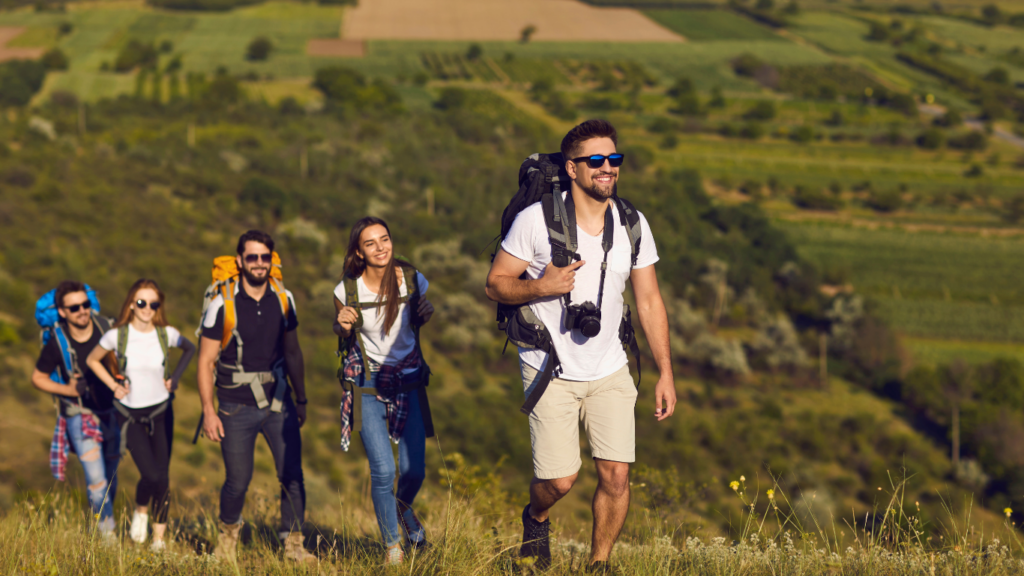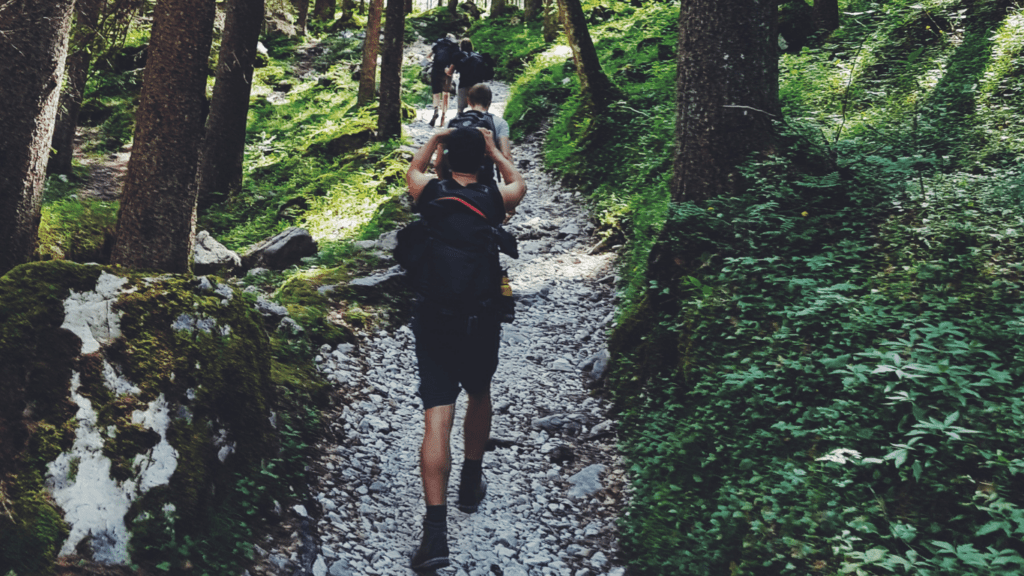Physical Health Benefits
Hiking offers numerous physical health benefits, making it an excellent activity for those looking to improve their fitness level.
Improved Cardiovascular Health
Hiking is an effective way to bolster cardiovascular health. It engages the heart, increasing its efficiency and endurance. Climbing uphill and navigating trails elevate heart rate, which enhances circulation and lowers blood pressure according to the American Heart Association. Consistently hiking several times a week can significantly reduce the risk of heart disease and stroke.
Muscle Strength and Tone
Hiking strengthens and tones muscles. Unlike flat-surface walking, it challenges various muscle groups. Ascending hills works out the hamstrings, quadriceps, and glutes; descending trails activates the muscles surrounding knees and ankles. For additional benefits, using trekking poles engages upper body muscles like biceps, triceps, and shoulders. Incorporating diverse terrains ensures a full-body workout.
Weight Management
Hiking contributes to effective weight management. It burns more calories than walking on even surfaces due to its varied intensity. For example, a 160-pound person can burn approximately 430 calories per hour while hiking, notes the Mayo Clinic. Regular hiking sessions boost metabolism, promoting fat loss and maintaining a healthy weight. Engaging in hikes of varying difficulty levels ensures consistent calorie expenditure and enhances overall fitness.
Mental Health Benefits
Hiking offers numerous mental health benefits that significantly enhance overall well-being. This section explores these advantages in detail.
Stress Reduction
- Engaging in hiking reduces stress by immersing individuals in nature.
- Green spaces have been shown to lower cortisol levels, the hormone associated with stress.
- Regularly hitting the trails creates a natural environment free from urban stressors and digital distractions.
- Consequently, participants feel more relaxed and at peace.
- Trails surrounded by forests and rivers calm the mind faster than built environments do.
Enhanced Mood
Hiking elevates mood by increasing the production of endorphins. These natural mood boosters improve emotional well-being. Hiking also provides a sense of achievement, elevating self-esteem and boosting overall happiness. For instance, reaching the summit of a hill or completing a challenging trail triggers positive feelings that linger. Social benefits complement these by enhancing mood through shared experiences and camaraderie.
Cognitive Function Improvement
Hiking enhances cognitive function through physical exercise and mental engagement. Trails often require navigation and problem-solving, stimulating brain activity. Physical exertion increases blood flow to the brain, enhancing memory, attention, and creativity. For example, hikers often report improved focus after tackling complex routes. Regular hiking sessions keep the mind sharp, mitigating age-related cognitive decline and promoting overall mental resilience.
Social Benefits
Hiking provides numerous social benefits that enhance personal connections and group dynamics. It fosters social interaction and strengthens relationships through shared experiences.
Building Connections
Hiking brings people together, facilitating new friendships and deepening existing ones. When shared, the activity creates a sense of camaraderie as hikers face challenges and enjoy nature’s beauty together. Studies from the Journal of Environmental Psychology show that group activities in nature foster trust and communication. Examples include hiking with family, friends, or organized hiking groups.
Group Hiking Activities

Organizing group hiking activities offers structured social interaction. Trail clubs and community events provide regular opportunities for group hikes, promoting a sense of belonging. According to the American Hiking Society, participating in group hikes can improve social skills by encouraging teamwork, leadership, and mutual support. Popular group hikes feature clean-up initiatives, charity events, and guided nature walks, which all amplify social connectivity.
How to Get Started
Beginning your hiking journey may seem daunting, but with the right information, it becomes much more manageable. Here are essential steps to kickstart your new outdoor adventure.
Choosing the Right Gear
Proper gear ensures safety and comfort on the trails. Start with a good pair of hiking boots; they provide necessary ankle support and traction. Look for breathable, moisture-wicking clothing to regulate body temperature and reduce chafing. A sturdy backpack to carry essentials like:
- water
- snacks
- first-aid kit
is crucial. Trekking poles can enhance stability, especially on uneven terrains. Don’t forget a hat and sunscreen for sun protection. For those hiking in colder conditions, layering clothes is key to adjusting to temperature changes.
Finding Local Trails
Explore nearby trails to ease into hiking. Use apps like AllTrails or websites like the National Park Service to locate trails based on difficulty, distance, and user reviews. Start with shorter, well-marked trails if you’re a beginner. Local parks often offer beginner-friendly options, and community groups can provide trail recommendations. Visit the trailhead early in the morning or late in the afternoon to avoid crowds and heat. Keep track of your hikes to monitor progress and set new goals.
Safety Tips for Hiking
Hiking offers numerous health benefits, but it’s important to prioritize safety to enjoy the experience fully.
Preparing for the Hike
It’s essential to plan properly before setting out. Check weather reports and trail conditions to avoid unexpected hazards. Pack essential items such as a map, compass, first aid kit, sufficient water, high-energy snacks, and a multi-tool. Wear appropriate footwear and clothing to handle varying terrain and weather conditions. Share your hiking plan with someone trustworthy, including details about your route and expected return time.
Staying Safe on the Trails
Remain vigilant while hiking to avoid potential dangers. Stay on marked trails to prevent getting lost or encountering unsafe areas. Keep a steady pace and take regular breaks to conserve energy. Monitor your hydration and food intake to maintain stamina. Be aware of your surroundings, including wildlife, especially in unfamiliar environments. Carry a whistle or other signaling device for emergencies. If you’re hiking alone, maintain additional caution and avoid taking unnecessary risks to ensure your safety.




